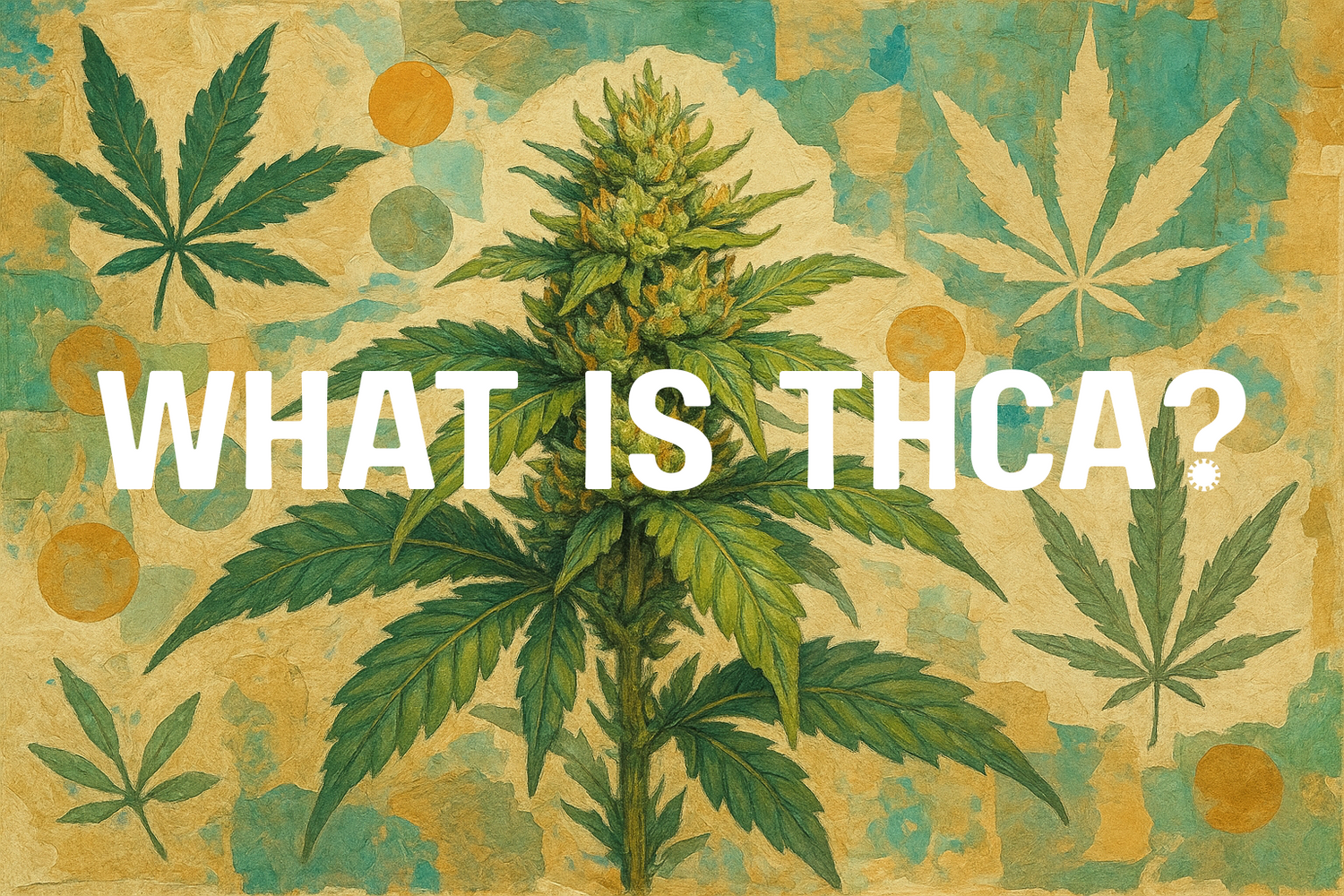What Is THCA? A Scientific Guide to the Cannabinoid Before Heat
Introduction
THCA—tetrahydrocannabinolic acid—is often misunderstood. It’s the naturally occurring cannabinoid acid found in raw cannabis and hemp flower before heat is applied. While non-intoxicating in its natural state, THCA can transform into psychoactive THC through a simple chemical process. Understanding that transformation—and the implications for your health, safety, and legal standing—is essential for any informed consumer.
1. THCA in Its Raw Form
What it is:
-THCA is the acidic precursor to THC.
-Found in highest concentration in fresh, unheated cannabis buds.
-Chemically stable at lower temperatures, but highly sensitive to heat.
Key property:
When heated through smoking, vaping, or cooking, THCA undergoes decarboxylation, a process that removes a carboxyl group (-COOH) and produces delta-9-THC—the primary psychoactive compound in cannabis.
2. The Decarboxylation Process
Temperature and reaction:
-Activation begins around 220–250°F (105–121°C).
-Optimal conversion happens in the 230–250°F range when heat is applied consistently for several minutes.
-Overheating above 300°F risks degrading THC into cannabinol (CBN), which is less psychoactive and more sedative.
Why it matters:
Understanding this chemical step explains why raw THCA doesn’t cause intoxication—until it’s exposed to sufficient heat.
3. Effects of THCA vs. THC
THCA (non-psychoactive):
-Doesn’t bind strongly to CB₁ receptors in the brain.
-Studied for potential anti-inflammatory, neuroprotective, and anti-nausea effects.
-Consumed raw in juices, tinctures, or unheated extracts for wellness purposes.
THC (psychoactive):
-Binds directly to CB₁ receptors, producing euphoria, altered perception, and potential impairment.
-Effects depend on dose, individual tolerance, and method of consumption.
4. Potential Risks and Safety Considerations
-Unregulated products: May contain pesticides, heavy metals, or residual solvents without proper lab testing.
-Unknown potency: Without a Certificate of Analysis (COA), you can’t know the true cannabinoid concentration.
-Overconsumption risk: Heated THCA can deliver high doses of THC quickly, especially in concentrates.
-Drug testing: Even if consumed raw, trace THC levels may still appear on tests if partial decarboxylation occurs during handling or storage.
5. Legal Landscape
While THCA itself may fall under hemp legality definitions if total delta-9-THC is ≤0.3% by dry weight, its potential to convert into THC creates legal gray areas:
-Some states regulate THCA as if it were THC because heat exposure during use is inevitable.
-Interstate transport can be risky if enforcement agencies test total potential THC rather than delta-9 content alone.
Best practice: Always check local and state regulations before purchasing or traveling with THCA products.
Conclusion
THCA is a fascinating cannabinoid—chemically stable in its raw form, but only one heating step away from becoming intoxicating THC. Understanding the science of decarboxylation, the difference in effects, and the legal nuances empowers you to make informed, safe choices. At THCA Trim, we believe education is as important as quality—because knowing your cannabinoids is the first step to using them responsibly.

